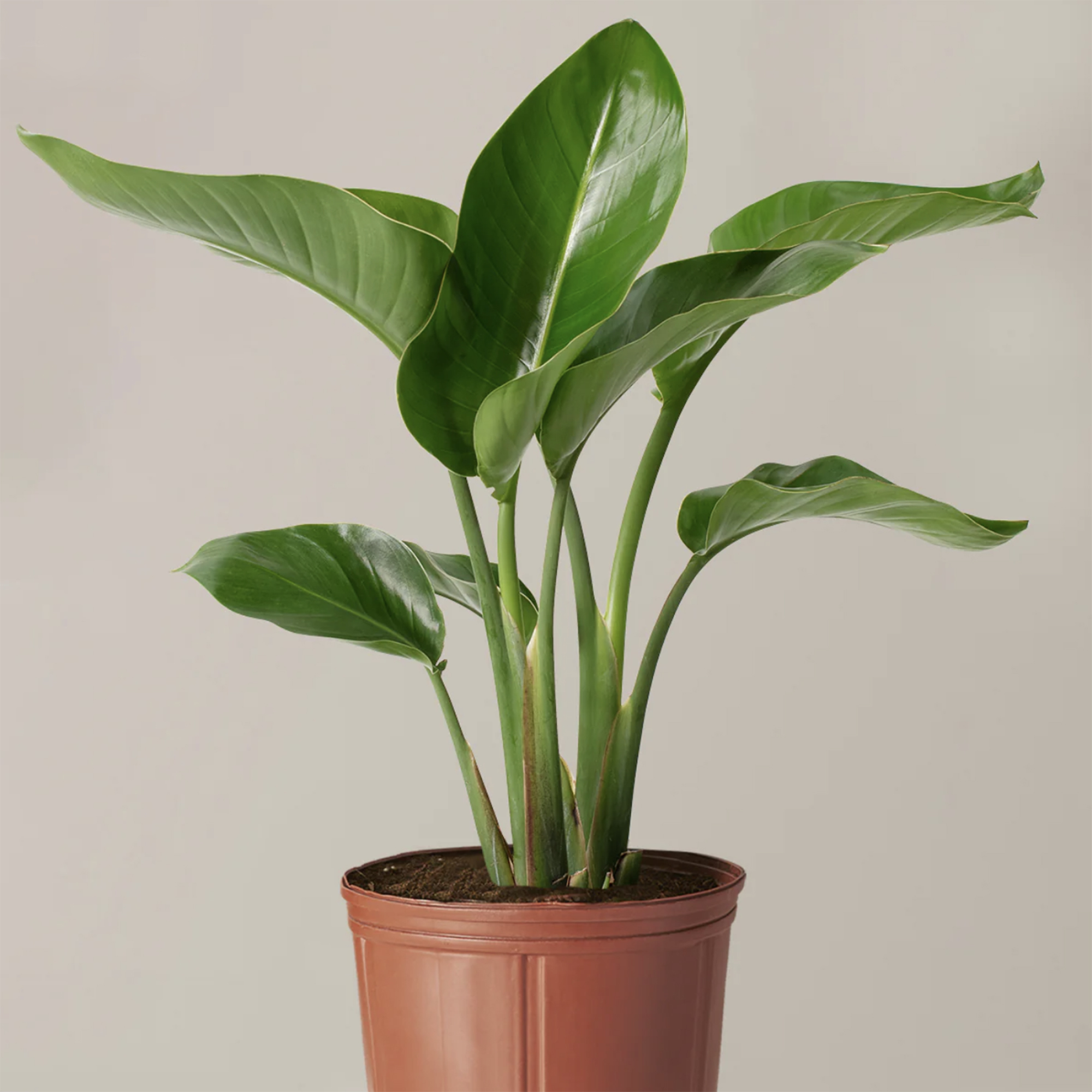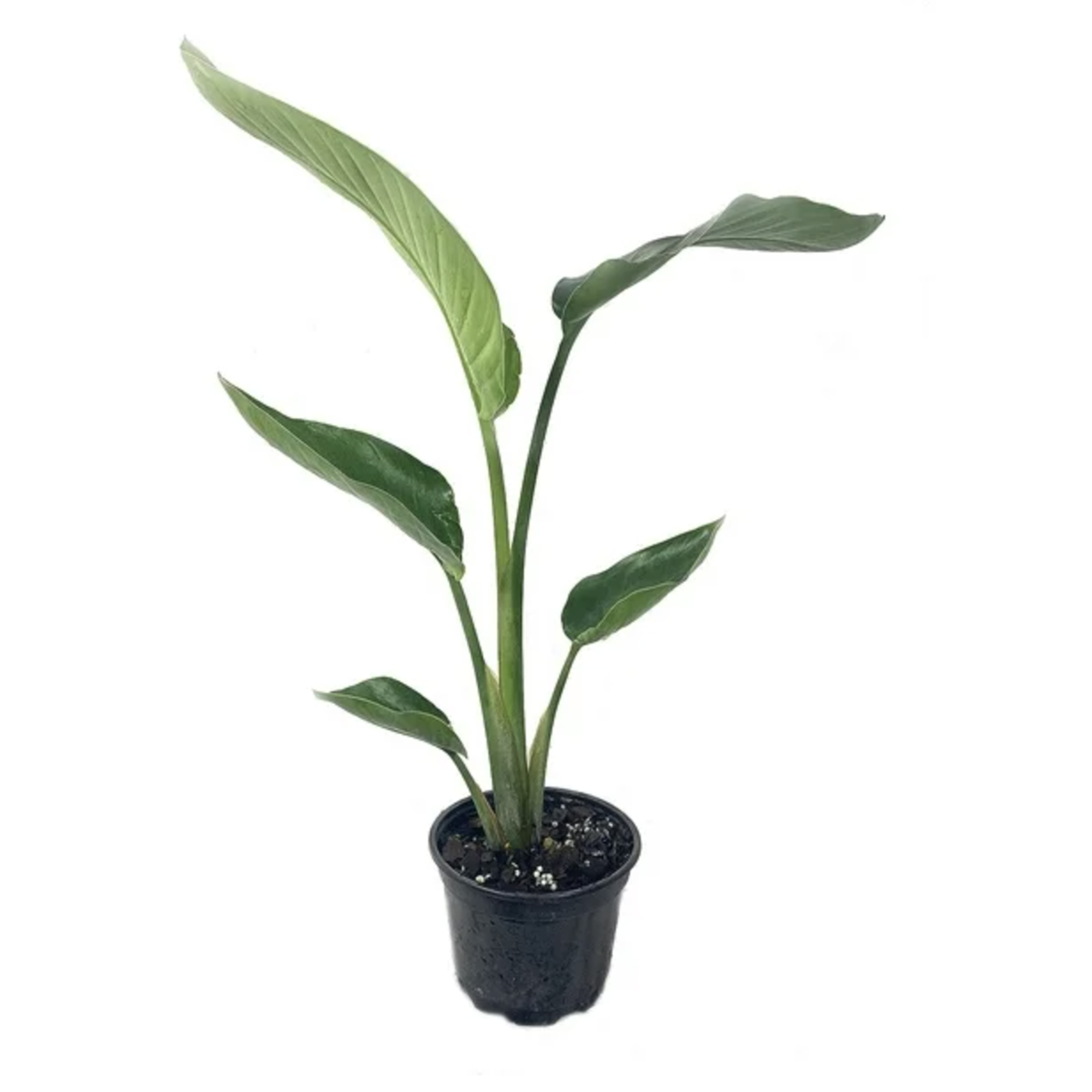How to grow bird of paradise – and add these tropical favorites to your indoor plant collection
Get a slice of paradise indoors with expert advice for growing these bold plants from a senior horticulturist
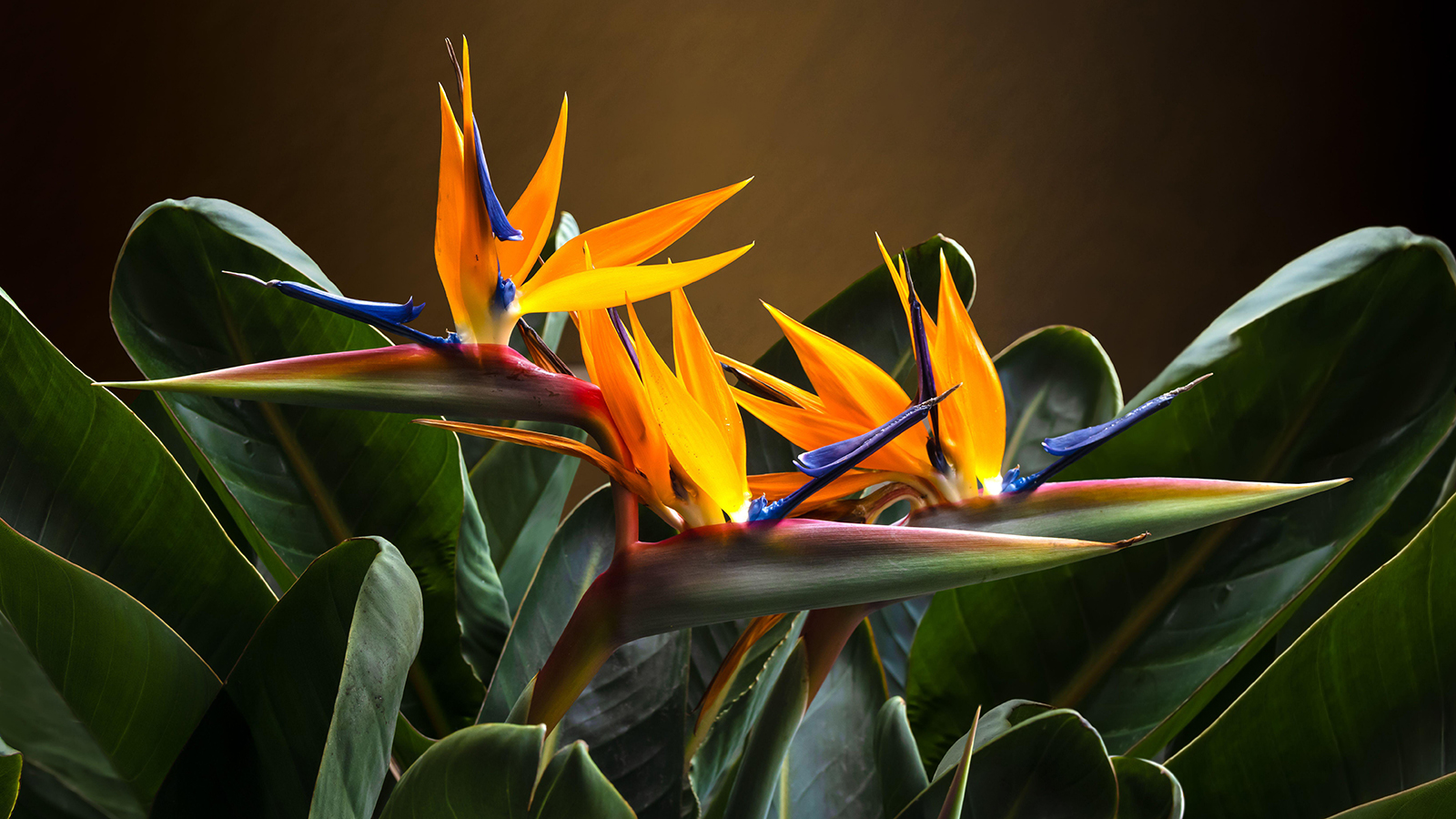
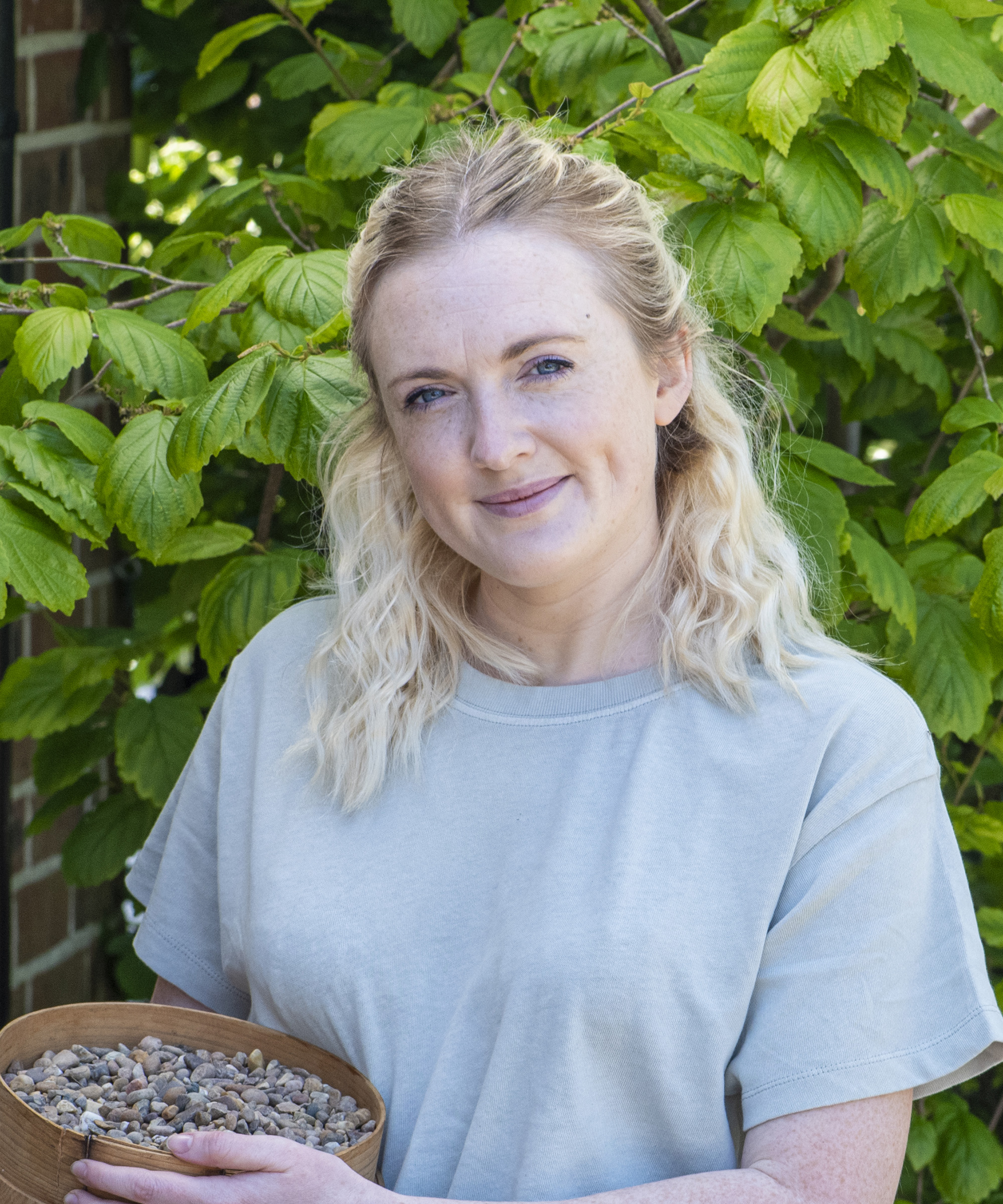
The flowers produced by the tropical bird of paradise are almost too beautiful to be believed.
Though the flowers steal most of the spotlight, their foliage game is also strong, which makes the bird of paradise an extremely desirable indoor plant.
'In warmer climates (USDA zones 9 and up) you can grow them outdoors, but for most of North America they’re indoor plants,' says Ian Simpkins, Senior Director of Horticulture at Vizcaya Museum and Gardens in Miami.
'They’re popular because they’re pretty tolerant of indoor conditions as long as they get enough sun and are kept warm enough,' says Ian, who shares his essential insights into growing these intriguing plants in the home.

With the right care, the bird of paradise plant will reign supreme indoors
Expert care tips for bird of paradise plants
'The white flowering species Strelitzia nicolai is the most popular, and is widely available because it grows fast and is more tolerant of the low light and cool temperatures of indoor care,' says Ian.
'Strelitzia reginae is not quite as low maintenance, and likes warmer conditions with more sun than most indoor spaces can provide.
'I wouldn’t recommend growing this species indoors unless you have a south-facing window that gets several hours of direct sunlight a day, and are willing to be attentive to its needs,' advises Ian.

Ian Simpkins is a senior Director of Horticulture & Sustainability at the famous Vizcaya Museum and Gardens in Miami. An expert plantsman with over 30 years experience in plant care, Ian has a substantial knowledge of tropical and temperate plant material.
1. Give it plenty of light
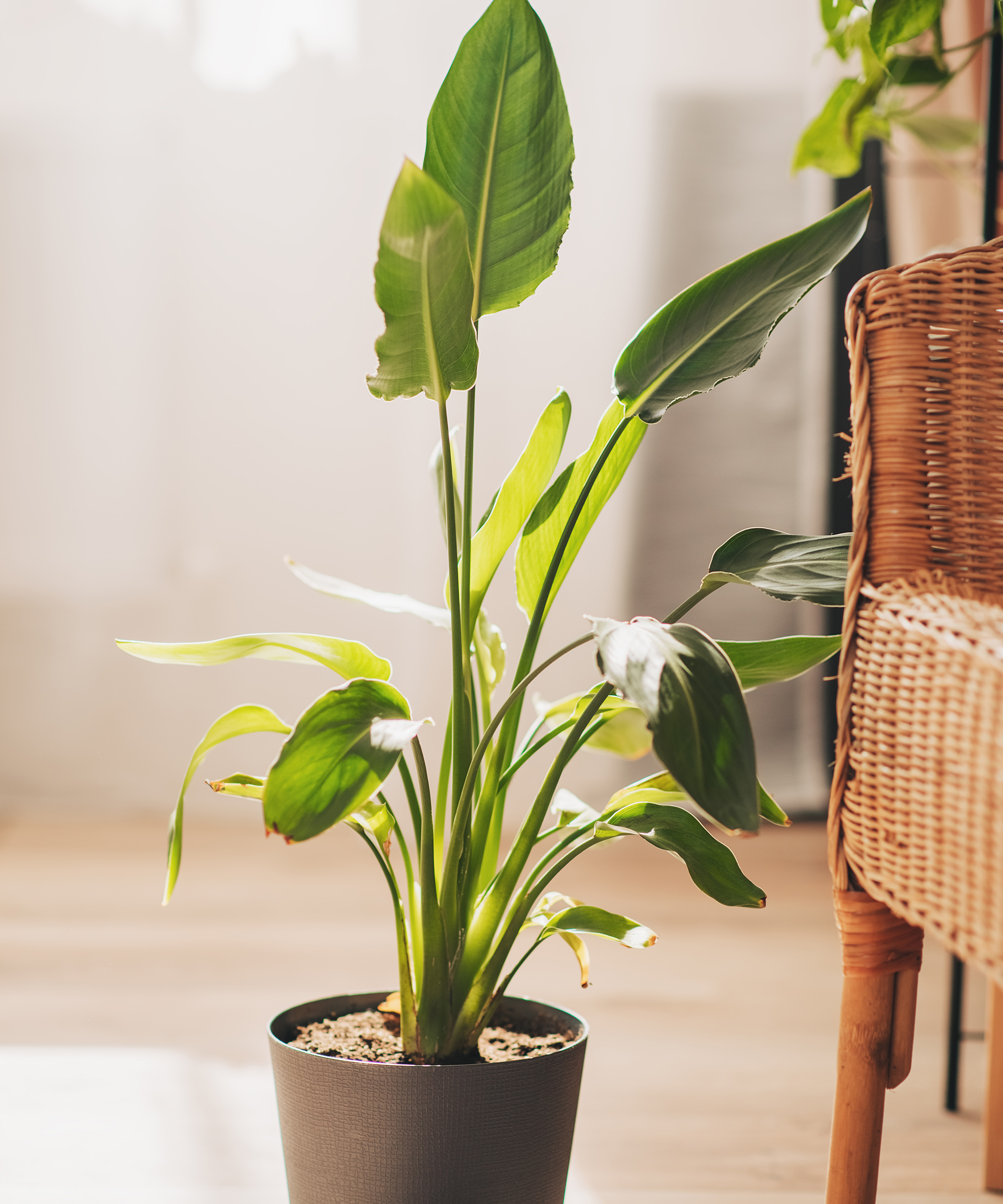
Strelitzia nicolai is the more desirable variety for growing indoors
Strelitzia nicolai are popular for growing inside as they make better low light indoor plants than Strelitzia reginae.
'White bird of paradise plants are tolerant of lower light conditions, but if they don’t get at least bright indirect light for several hours during the day, they’ll gradually thin out and decline,' explains Ian.
'If you can manage a couple of hours of direct sun a day that’s ideal and it’ll reward you with nice new growth. The bird of paradise is not a plant that you can put in a corner at the back of the office or bedroom, it will not do well and quickly decline,' says Ian.
2. Keep humidity levels up
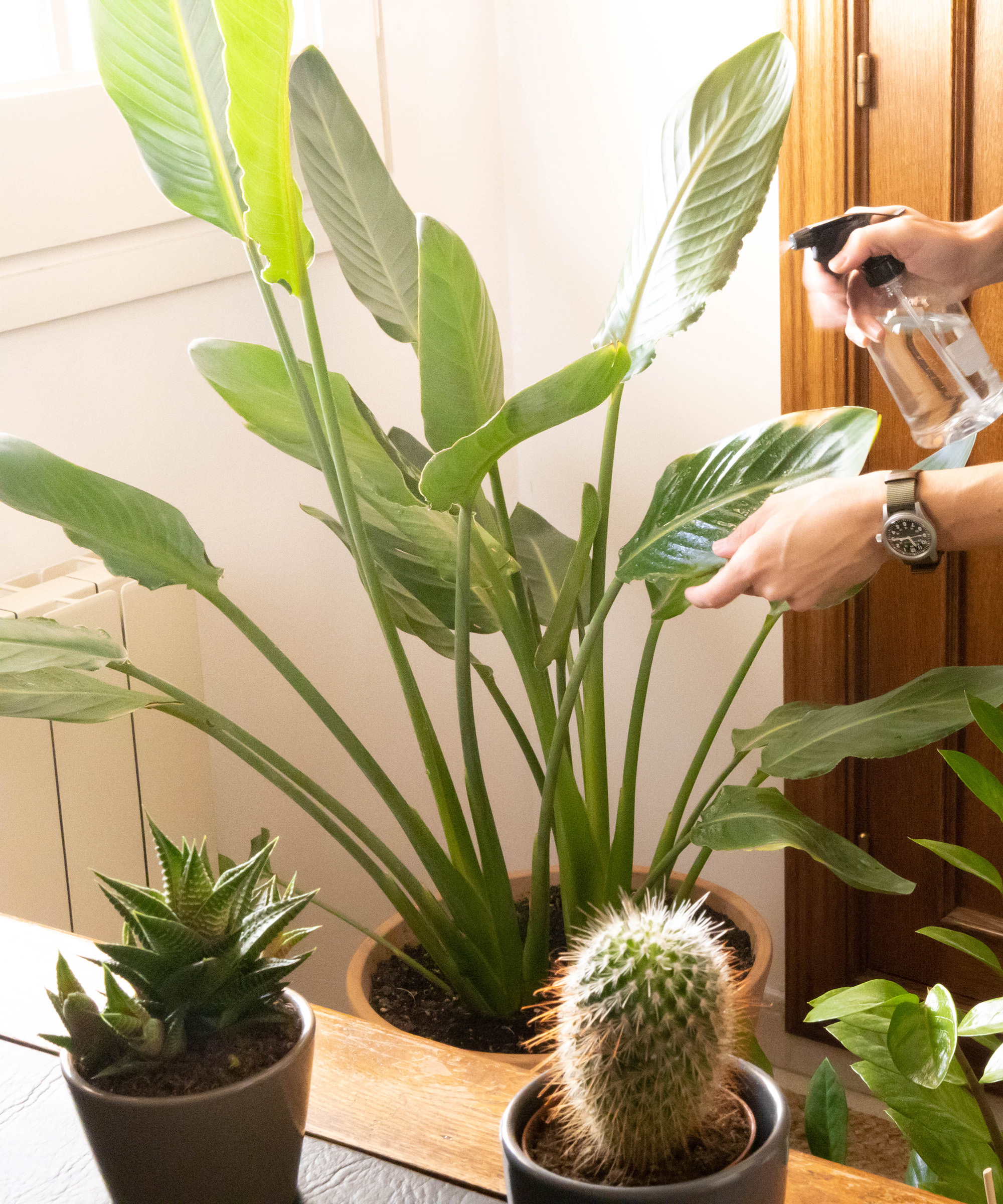
Keep your bird of paradise plant away from air conditioning
'Bird of paradise plants aren’t too picky about temperature, but they do not like low humidity and cold breezes from air conditioning. If the air is too dry, you’ll see the edges of the leaves begin to turn brown and die,' says Ian.
'You can prevent this from happening (especially in the winter when the heat is on) by misting the leaves a couple of times a day or growing the plant above a saucer of water and pebbles,' he says.
'The pebbles prevent the plant from sitting in the water and getting too wet, but as the water evaporates, it increases the humidity. A humidifier or a tray of water above the radiator will also work,' Ian suggests.
Species which like humidity tend to make excellent bathroom plants or kitchen plants.
Shop bird of paradise plants
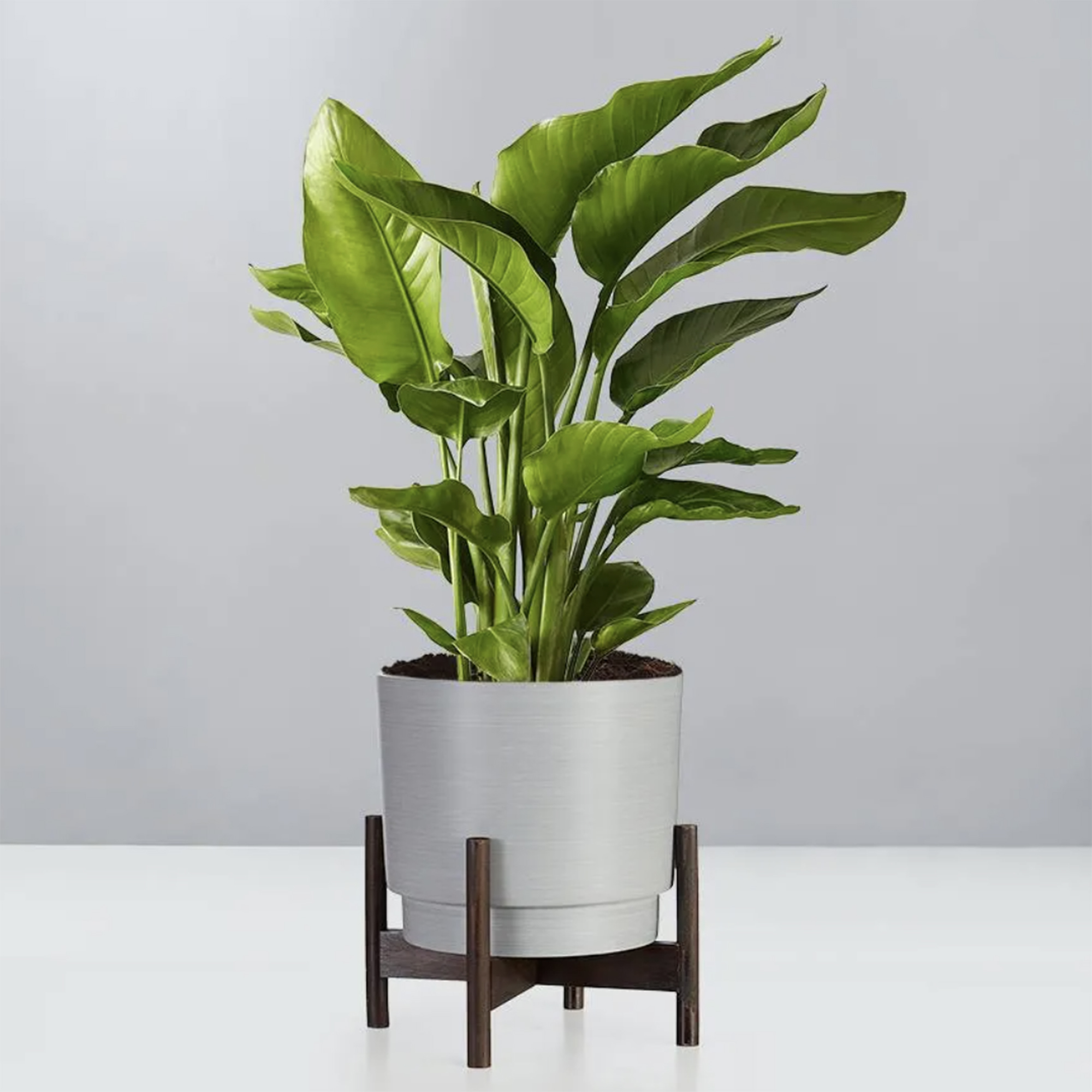
Sold as a fairly mature floor plant, this will arrive ready to add straight to your indoor garden.
3. Water in moderation
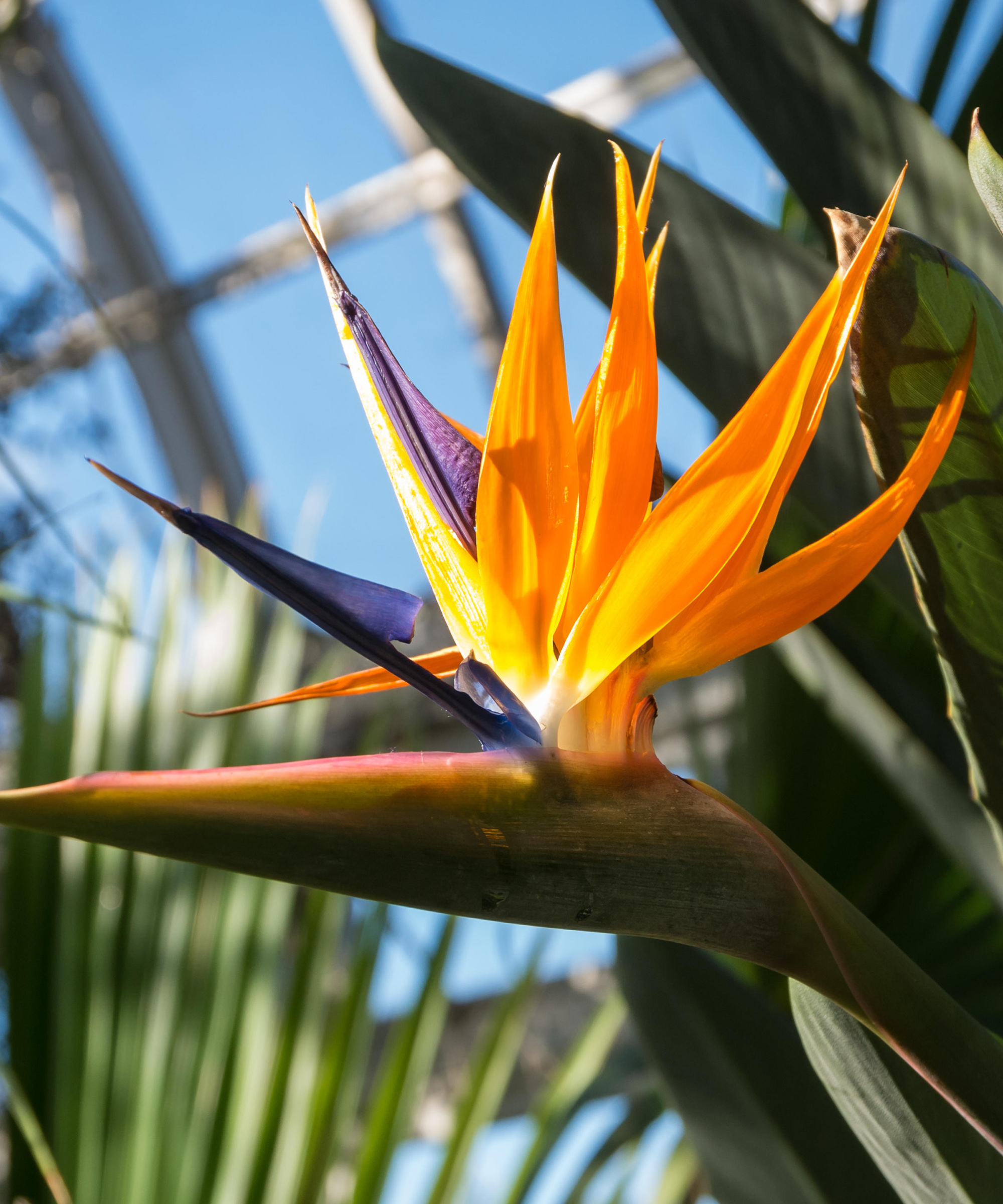
Give deep waterings less frequently rather than regular sprinkles
'Bird of paradise plants like moderate water – not too wet and not too dry,' says Ian. Ian suggests that watering deeply, less often is more effective than sprinkling on the surface regularly.
'Light sprinkles won’t cut it,' he says. 'They like to dry out a little between watering, so wait to water again until the top inch or two of the soil is dry to the touch.'
Don't avoid the trap that most people fall into and overwater your bird of paradise plant, as this can cause them to rot.
'The leaves will start to yellow and perhaps gray-ish green as well. If you catch that early, stop watering and let it dry out,' says Ian.
'If the plant is really loose in the pot it’s probably too late to fix an overwatered plant and it’ll perish,' says Ian. But he reassures us that these plants are grown in great numbers and aren’t too expensive, so you can always try again.
4. Keep an eye out for pests
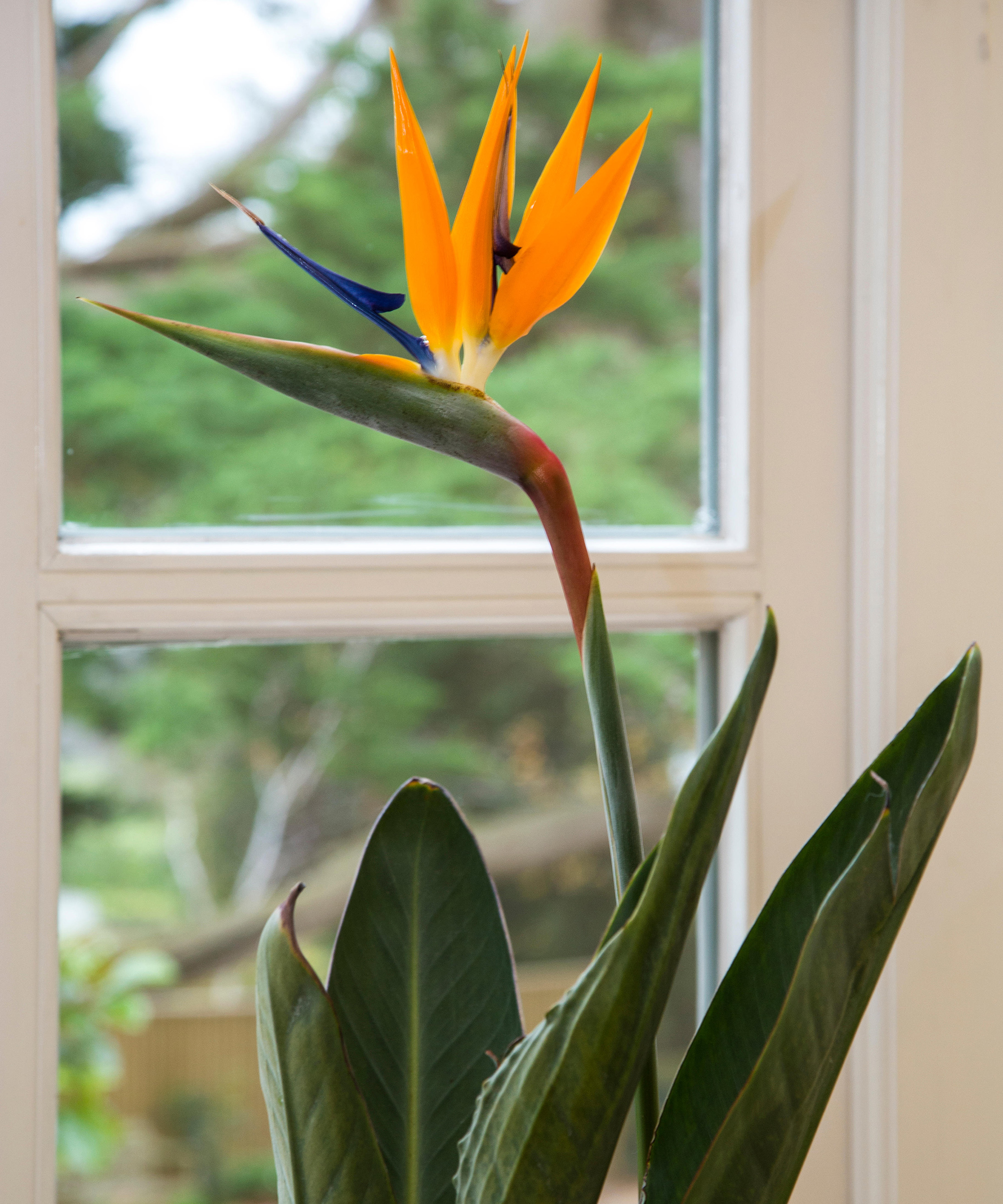
Spider mites and mealybugs are common enemies to the bird of paradise plant
'The most common houseplant pests for the bird of paradise plant indoors are spider mites and mealybugs. Both are very difficult to control once they get going so keep your eyes peeled for them,' says Ian.
A good preventative measure is to wipe down the leaves of your plant as soon as you get it home. Ian suggests using soapy water (1 tbsp of soap to 1 gallon of water) to clean the leaves and remove pests that may have hiked in on the plant.
Also ensure your plants get a good amount of humidity.
5. Think about nutrients
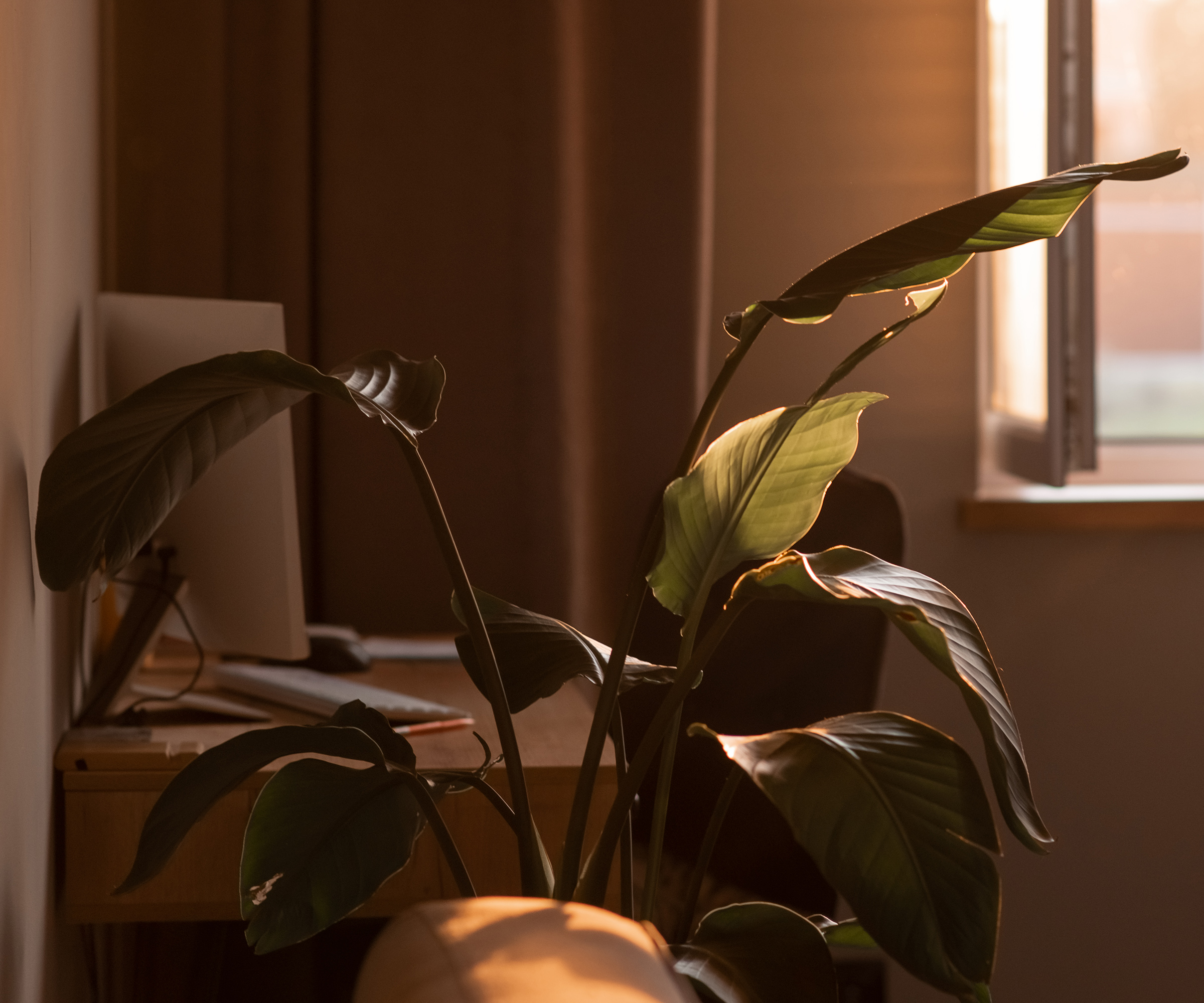
Indoors Bird of Paradise like moderate conditions
When you pot up your new bird of paradise plant Ian recommends using a general-purpose potting mix. 'Do not use potting soil indoors, use a soilless mix like Pro-Mix or Miracle-Gro potting mix,' he says.
'They grow slowly in an indoor garden, so you can go at least a year before it needs a bigger pot with fresh soil. When you repot it, you can top it off with a slow-release houseplant fertilizer,' says Ian. You could try these Osmocote® PotShots™ at Greendigs.
'These types of fertilizer release a very small amount each time you water, so adding plant feed is one less thing to remember to do for your plant,' says Ian.
FAQs
How do you get a bird of paradise to flower?
'Lots and lots of light. It is very uncommon to get bird of paradise plants to flower indoors, and mostly, they’re grown as foliage plants,' says Ian Simpkins, Senior Director of Horticulture at Vizcaya Museum and Gardens in Miami.
'You can put it outdoors during the summer, but remember since it’s been indoors, don’t give it full sun outdoors; light shade is fine. The heat and humidity of summer may give it enough of a boost to give you flowers, but it’s unlikely,' says Ian.
Does bird of paradise grow well indoors?
'There are three things to remember if you want to be successful caring for a bird of paradise plant indoors,' says Ian Simpkins, Senior Director of Horticulture at Vizcaya Museum and Gardens in Miami.
'Firstly give it as much light as possible. Second, keep your plant away from direct drafts from air conditioning and heating. Thirdly, only water when the surface of the soil is dry to the touch,' he says.
Over time your bird of paradise plants will grow tall indoors, with plenty of foliage. However, it is a tough ask to get your plant to bloom indoors.
If you're interested in bringing some color to your indoor garden, you could have a look at the best indoor flowering plants.
Sign up to the Homes & Gardens newsletter
Design expertise in your inbox – from inspiring decorating ideas and beautiful celebrity homes to practical gardening advice and shopping round-ups.

Teresa was part of a team that launched Easy Gardens magazine two years ago and edited it for some time. Teresa has been a Gardens Editor at Homes & Gardens, Country Homes & Interiors and Living Etc magazine since 2020 and has developed close working relationships with top garden designers, and has been exposed to an array of rich garden content and expertise.
-
 Ina Garten's storage pantry is an insightful window into all of the best cookware used by the chef – and it's easy to recreate on your kitchen shelves from $48
Ina Garten's storage pantry is an insightful window into all of the best cookware used by the chef – and it's easy to recreate on your kitchen shelves from $48The beautiful dishware in The Barefoot Contessa's Hamptons pantry showcases the tools she uses most often to cook – this is exactly how you replicate it
By Sophie Edwards Published
-
 Extend the lifespan of your appliance with 5 simple but crucial washing machine maintenance tips
Extend the lifespan of your appliance with 5 simple but crucial washing machine maintenance tipsFrom cleaning the filters to keeping the door open, experts reveal the washer tips they swear by
By Andy van Terheyden Published
